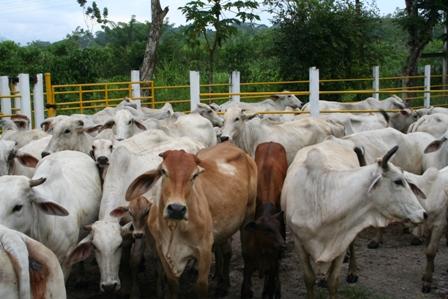 As the Colombian government prepares for talks with the FARC guerrillas, questions of the socio-economic model, of distribution, become ever more relevant. At the same time the Colombian government is adopting a more sophisticated poverty index, the Multi-Dimensional Poverty Index. This is an advance, but, argues Jorge Iván González, it does not show the gaps in living standards, especially between town and country.
The most striking gap is between urban centres and the countryside. González note that between 2002 and 2010 it increased from 25 to 27 points, even though poverty was decreasing.
The main root of the problem, González argues, is the neglect of agriculture. In 2010 Colombia imported 8.5 metric tonnes of food, whereas in 2002 it imported 1 million. Mining is expanding. Cattle-ranching is becoming the main form of agriculture in many areas. Rural institutions have deteriorated and communications are poor.
Deliberate policies to promote redistribution are essential, González says, if this situation is to change.
A chilling statistic, as the Colombian government embarks on peace talks with the FARC guerrillas, is that in over half the departments of Colombia for which information is available, the Gini index for land concentration is 0.80, where 1.00 represents maximum inequality. For a country that has suffered almost 50 years of internal conflict largely because of land concentration, this is a nightmare number.
As the Colombian government prepares for talks with the FARC guerrillas, questions of the socio-economic model, of distribution, become ever more relevant. At the same time the Colombian government is adopting a more sophisticated poverty index, the Multi-Dimensional Poverty Index. This is an advance, but, argues Jorge Iván González, it does not show the gaps in living standards, especially between town and country.
The most striking gap is between urban centres and the countryside. González note that between 2002 and 2010 it increased from 25 to 27 points, even though poverty was decreasing.
The main root of the problem, González argues, is the neglect of agriculture. In 2010 Colombia imported 8.5 metric tonnes of food, whereas in 2002 it imported 1 million. Mining is expanding. Cattle-ranching is becoming the main form of agriculture in many areas. Rural institutions have deteriorated and communications are poor.
Deliberate policies to promote redistribution are essential, González says, if this situation is to change.
A chilling statistic, as the Colombian government embarks on peace talks with the FARC guerrillas, is that in over half the departments of Colombia for which information is available, the Gini index for land concentration is 0.80, where 1.00 represents maximum inequality. For a country that has suffered almost 50 years of internal conflict largely because of land concentration, this is a nightmare number.

Colombia: Poverty falls but the gaps widen
 As the Colombian government prepares for talks with the FARC guerrillas, questions of the socio-economic model, of distribution, become ever more relevant. At the same time the Colombian government is adopting a more sophisticated poverty index, the Multi-Dimensional Poverty Index. This is an advance, but, argues Jorge Iván González, it does not show the gaps in living standards, especially between town and country.
The most striking gap is between urban centres and the countryside. González note that between 2002 and 2010 it increased from 25 to 27 points, even though poverty was decreasing.
The main root of the problem, González argues, is the neglect of agriculture. In 2010 Colombia imported 8.5 metric tonnes of food, whereas in 2002 it imported 1 million. Mining is expanding. Cattle-ranching is becoming the main form of agriculture in many areas. Rural institutions have deteriorated and communications are poor.
Deliberate policies to promote redistribution are essential, González says, if this situation is to change.
A chilling statistic, as the Colombian government embarks on peace talks with the FARC guerrillas, is that in over half the departments of Colombia for which information is available, the Gini index for land concentration is 0.80, where 1.00 represents maximum inequality. For a country that has suffered almost 50 years of internal conflict largely because of land concentration, this is a nightmare number.
As the Colombian government prepares for talks with the FARC guerrillas, questions of the socio-economic model, of distribution, become ever more relevant. At the same time the Colombian government is adopting a more sophisticated poverty index, the Multi-Dimensional Poverty Index. This is an advance, but, argues Jorge Iván González, it does not show the gaps in living standards, especially between town and country.
The most striking gap is between urban centres and the countryside. González note that between 2002 and 2010 it increased from 25 to 27 points, even though poverty was decreasing.
The main root of the problem, González argues, is the neglect of agriculture. In 2010 Colombia imported 8.5 metric tonnes of food, whereas in 2002 it imported 1 million. Mining is expanding. Cattle-ranching is becoming the main form of agriculture in many areas. Rural institutions have deteriorated and communications are poor.
Deliberate policies to promote redistribution are essential, González says, if this situation is to change.
A chilling statistic, as the Colombian government embarks on peace talks with the FARC guerrillas, is that in over half the departments of Colombia for which information is available, the Gini index for land concentration is 0.80, where 1.00 represents maximum inequality. For a country that has suffered almost 50 years of internal conflict largely because of land concentration, this is a nightmare number.
